
India / South Asia Collection
The India / South Asia Collection of Ferenc Hopp Museum of Asiatic Arts consists of almost 1,500 objects. As the third largest collection in the museum, it features several exceptional pieces of art. In accordance with the museum’s general collecting principles, mainly objects of artistic value or of applied arts as well as of historical interest can be found here, but ritual objects connected to everyday or religious life, together with souvenirs of folk art are also given a place in the Indian Collection.
The most important part of this complex is the early sculptural art section, relatively small in number. It includes Gandharan Buddhist statues (1st century BC – 6th-7th century AD) bearing Hellenistic influences; Hindu and Buddhist sculptures of North Indian Mathura (2nd century BC – 6th century AD), and several statues created during the period of the North-East Indian Pala dynasty (8th–12th century).
Treasures of the Mughal period (16th–19th century) form an outstanding ensemble of objects: representative pieces of Moghul miniature painting, weapons, jade carvings with gemstone inlay, and carpet fragments.
One of the finest South Indian objects is a 14th-century statue of the Earth Goddess (Bhudevi) from the early Vijayanagara Empire, used as part of a home altar, and a 17th- and 18th-century incense holder, shaped in the form of female beauty. Both are exceptional examples of Dravidian sculpture.
The earliest artefacts in the Indian collection originate from prehistoric times, i.e. from the Indus Valley Civilisation (third millennium BC) or even earlier: chipped flints from Sukkur, hand-axes, and pottery fragments. The terracotta statues representing the cult of the Mother Goddess originating from the Indus Valley constitute a unit unique in Central Europe.
Textiles constitute the largest unit within the India / South Asia Collection. Among the mostly ethnographical group of textiles there are many pieces which show excellent quality applied art. This sub-collection offers a vivid portrayal of Rajasthani folk costume and applied art of the day. The collection also boasts a substantial number of pieces of Indian metalwork, consisting of weapons, jewellery and household items. Everyday household items form a separate unit, typical examples of which are silver inlaid Bidri metal vessels originally exhibited at the Vienna World’s Fair in 1873. A group of 34 carved almandine stones, for setting in rings, is also remarkable.
20th-century contemporary art can also be found in the India / South Asia Collection. The most valuable piece in this section is Jamini Roy’s (1887–1972) painting, commonly referred to as Bengali Mother, which builds on Bengali folk art. In the middle of the 2000s, 62 paintings by the India-based but Hungarian-born Elizabeth Sass-Brunner (1889–1950) and her daughter Elizabeth Brunner (1910–2001) were donated to the museum.
Gallery
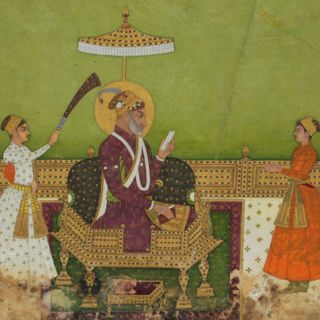
Northern India, Mughal style, 18th century
Watercolour on paper
Gift from Imre Schwaiger
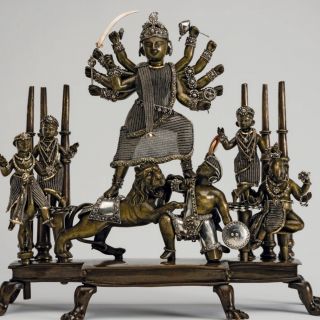
CHILDREN, KARTHIKEYA AND GANESHA, AS WELL AS LAKSHMI AND SARASVATI
Eastern India, 18th–19th century,
Bronze, silver,
Gift from Imre Schwaiger
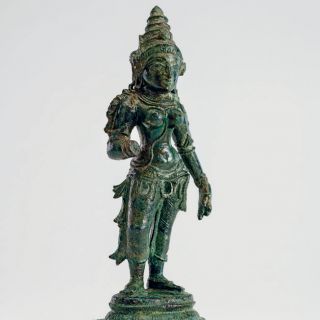
South India
late Chola period,13-14th century

Jaipur, 19th century
Painted black marble
Collected by Ferenc Hopp
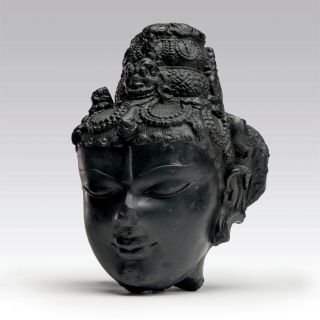
Bihar, Pala period, 11th–12th century
Black slate
Gift from Imre Schwaiger
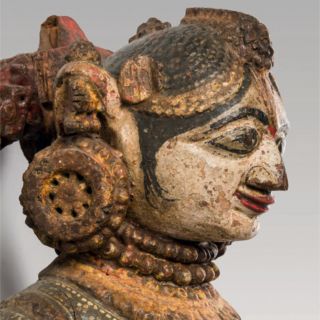
Jain building decoration
Gujarat, 17th–18th century
Painted teak
Gift from Imre Schwaiger
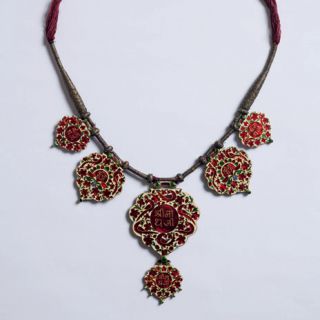
WITH THE NAME AND FOOTPRINT
OF SRINATHA
Jaipur, 18th–19th century
Gold, silver, enamel and textile
Gift from Imre Schwaiger

Rajasthan, second half of the 19th century
Silk fabric stitched with metal thread
Collected by Ferenc Zajti
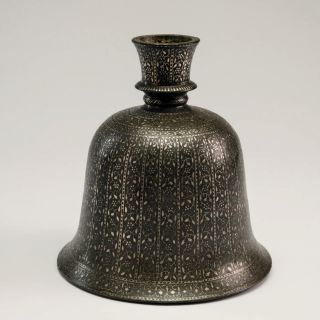
Northern India, 17th–18th century
Bidri metal, silver inlay
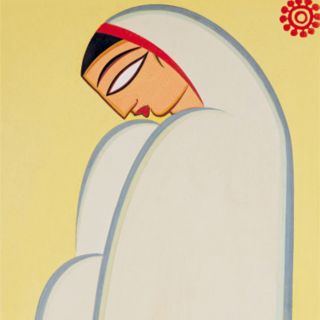
Jamini Roy (1887–1972),
Bengal, 1960s
Tempera on paper